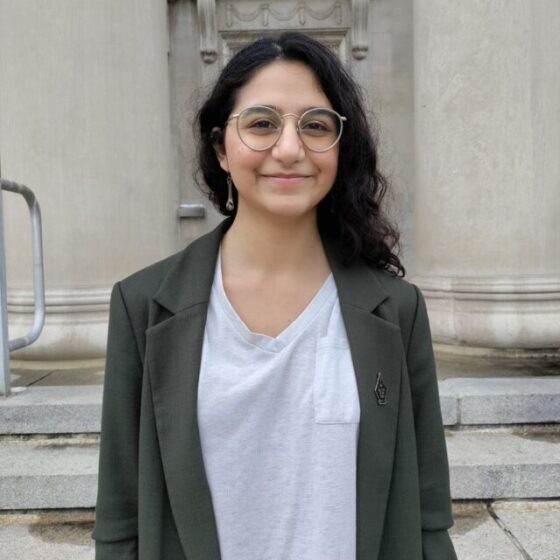Lead two agile teams of 12 and 5 producing multiple games. Managed team Confluence and Jira instances, sourced and onboarded new members, and created and met milestones.
Hello! I’m Uma Claire Teelock. I am a game producer and a student at Purdue University.
I am a hardworking, detail-oriented producer driven by helping my team as much as humanly possible. I love balancing everything I do, so I am simultaneously data-driven and people-first.
I have a special love for graphs and reports since they let me see the full picture. I am always eager to show off my findings! However, the core of my passion is the people I work with. I love driven and passionate people, and I always tailor my leadership on a team and individual basis. I thrive on giving people every opportunity to grow in what they're interested in.
Need someone who can bring fun, organization, and a holistic approach to situations to the team? Give me a call!
Projects
I’m working on two long-term game projects: Society Simulator, Office Duck
In my spare time, I’m making a fabric collection with my mother!
Currently Playing
- Persona 5 Royal
- Pentiment
- Portal
- Breath of the Wild
Need To Play
- Tales of Arise
- Baldur’s Gate 3
- Tears of the Kingdom
What I've been up to!
Hello! Here is a explanation of my process making games with my teams. Our team meetings are taken care of in the beginning of class, which is 2 hours long. We only try to take 30min maximum on these meetings and save the rest of the class as work time. Our team also works outside of class, but no meetings are held then.
Getting Started
Starting a team is one of the more difficult things I do. There are so many unknowns and things to get nailed down, so I like to set up our structures that can help us get rid of our starting paralysis.
Here’s what I do:
1. Set up Confluence and Jira
In Confluence

Though I understand that too much structure and progress can bog down a project, I still believe that having some scaffolding can greatly improve it. Here’s some features I add to the Confluence:
1. A GDD page. Designers and developers will add to it and create child pages from there
2. Templates. I add 4 templates in a separate page grouping to standardize our reports: Sprint report, meeting agendas, meeting notes, and sprint retrospectives.
3. Organizational chart
4. Analytics page. Once we get going in production, I have a public analytics page that tracks our average velocity and accuracy. This way both my team and I can keep track of our estimates. Completed sprint reports are added as child pages to this page
All of these resources are made so that they can be used once production is in full swing.
In Jira


When beginning, it’s harder to figure out what needs to be put in the backlog. For this reason, I only put little design/preproduction tasks until we have a better, actionable vision for the game. Once we are ready to start production, I start a dashboard and fill out the backlog.
2. Getting to know the team
As I’m setting up all of the systems, I like to take some time getting to know the team. I talk to each team member and ask about their personal and career goals. I also ask if they have any system or habit they’d like to incorporate or avoid that they did in previous teams. One of my values is to always create an environment of growth, so knowing my team members’ goals can help me give them what they need.
Production
Once we get to the production phase, we get into a repeating cycle of events. This helps us stay in a steady, organized approach to our work. As we go through each sprint and gather feedback on the systems we have, we may alter our workflow to better support the developers. Here’s our main cycle:
1. Sprint Days and Build Days (two week cycle)
Sprint and build days are on a two-week cycle marking the end of the previous sprint and the beginning of a new one. Every sprint results in a new build.
At the end of each sprint, before we move on to creating the new sprint, everyone plays the latest build. Any bugs found are noted as possible things to work on for the next sprint. We also create a new sprint report that contains a burndown chart, an issue breakdown, and stats about our team velocity and accuracy.
When starting a new sprint, I make an effort to assign everyone the same amount of work. Each story within the sprint is chosen to have our sprints create valuable increments to the game.
2. Sprint Check-ins (one week cycle)
Although we have stand-ups every meeting, we have more in-depth conversation about the current sprint. We quickly go around the room and discuss what we’re working on, and then I hold a mini-retrospective. I ask questions like these: how manageable is your workload? Do you need extra support for your tasks? Do you have any blocks?
These meeting last no longer than 10 minutes.
Need more information? Download my full resume here
Collaborated with other developers to create animation-ready assets for client projects.
Organized and hosted weekly events to promote community development
Game Development and Design, BS
Animation, BS
Virtual Effects Compositing, BS
Organizational Leadership, Minor
-
Confluence
-
Jira
-
Microsoft Office
-
Google Suite
-
Adobe Suite
-
Github
-
Unity
-
Unreal Engine
-
Agile methodology
-
Multi-team management
-
Multi-tasking
-
Task management
-
Documentation
-
Effective communication
-
Sprint retrospectives
Location: Dallas, TX
Email: uma.claire.teelock@gmail.com
Phone number: 214-213-0509
LinkedIn: found here





